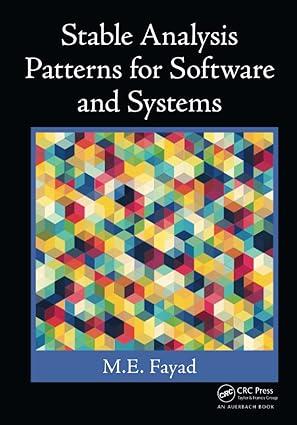Develop the following systems using the change pattern: 1. Accounting change: A change in accounting principles, accounting
Question:
Develop the following systems using the change pattern:
1. Accounting change: A change in accounting principles, accounting estimates, or the reporting entity. A change in an accounting principle is a change in a method used, such as using a different depreciation method or switching from LIFO to FIFO. An example of an accounting estimate change could be the recalculation of machine’s estimated life due to wear and tear. The reporting entity could change due to a merger or a break up of a company.
2. Change agent: A role to help members of an organization adapt to organizational change or to create organizational change.
3. Attitude change: Where attitudes are associated beliefs and behaviors toward some object [7]. They are not stable, and because of the communication and behavior of other people, are subject to change by social influences, as well as by the individual’s motivation to maintain cognitive consistency when cognitive dissonance occurs—when two attitudes or attitude and behavior conflict. Attitudes and attitude objects are functions of affective and cognitive components. It has been suggested that the inter-structural composition of an associative network can be altered by the activation of a single node. Thus, by activating an affective or emotional node, attitude change may be possible, though affective and cognitive components tend to be intertwined [8]. There are three bases for attitude change: compliance, identification, and internalization. These three processes represent the different levels of attitude change [9].
a. List all the functional requirements and nonfunctional requirements for each area.
b. List two challenges for each area.
c. Name five contexts for each area.
d. Draw the application of the pattern for each context in c.
e. Select a significant use case per application and describe each one of them with text cases.
f. Map each use case in e into a sequence diagram.
Step by Step Answer:





